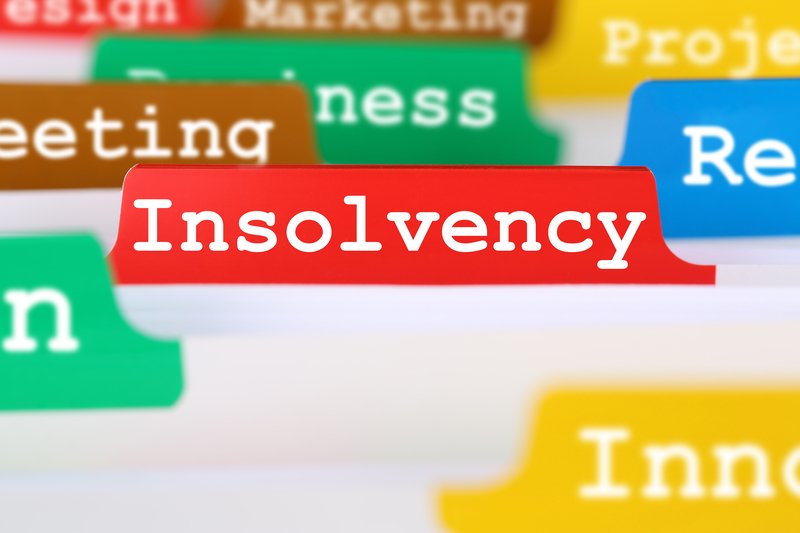If there’s one piece of advice to hold above all others while running your business, it’s this: cash is king.
It doesn’t matter how much you are selling or the size of your profit; if your business doesn’t have enough cash to pay staff and suppliers, it is in big trouble.
Even successful and profitable businesses can be affected by cash flow problems because as they grow, more working capital is required.
Without proper cash flow planning, good businesses can suddenly find they don’t have enough money to buy resources to fulfil the orders.
Running out of cash can have grave consequences for your business. Depending on whether your business is operated as a sole trader or a limited company, it could result in it being put into liquidation or you being declared bankrupt.
This doesn’t have the social stigma it may once have done, but is still a hugely disruptive event.
To help you better understand this complex area, here is ByteStart’s small business guide to insolvency, liquidation, and bankruptcy.
Insolvency
This is the catch-all title for running out of money. It means you don’t have the cash or assets to meet your current liabilities, such as money owed to suppliers or other due debt repayments.
Insolvency proceedings must be overseen by a qualified liquidator, receiver, or administrator. Since 1986, only authorised insolvency practitioners have been taking up these roles.
Company liquidation
When limited companies become insolvent, they go into liquidation. This is a process in which a liquidator winds up the affairs of the business and closes it.
A liquidator usually ensures all contracts have been completed, any legal disputes are settled, assets have been sold, and any money owed to the company is collected. At the end of the liquidation process, the company is struck from the Companies House register and dissolved.
Types of liquidation
There are two different types of voluntary liquidation: members’ voluntary liquidation and creditors’ voluntary liquidation.
1. Members’ voluntary liquidation
If your business can still pay its bills but you no longer want to run it and cannot sell it, you should consider a members’ voluntary liquidation.
2. Creditors’ voluntary liquidation
A creditors’ voluntary liquidation will be the route to take if you choose to liquidate your company because it can’t pay its debts.
As a company director, you and any other shareholders can voluntarily liquidate the company by passing a special resolution to stop trading. Once passed, the resolution must be sent to Companies House within 15 days and advertised in the London Gazette within 14 days.
The resolution must be advertised in the Edinburgh Gazette if your company is registered in Scotland.
You must then appoint an authorised insolvency practitioner to act as a liquidator and take control of winding up the company.
Within 14 days, you must also arrange a meeting with creditors, at which you must present a “statement of affairs” using form 2.14B.
You can download a copy of form 2.14B from this page of the Gov.uk website.
There is also compulsory liquidation, where the court makes an order to wind up the company.
To start this process, a creditor must issue your company with a statutory demand. On receipt of a statutory demand, you have 21 days to pay the debt or agree on a payment plan with the creditor.
Conduct of directors will be reported to BIS
The practitioner supervising the insolvency procedure must send a report on the conduct of company directors to the Department of Business, Innovation & Skills. This report will cover all company officers for a period of three years.
The Secretary of State will then determine whether any of the company directors should be disqualified from being company directors. A disqualification can last for up to 15 years.
The most commonly reported examples of poor conduct by company directors are:
- Trading while the company was insolvent
- Not keeping proper accounting records
- Failing to file company accounts or company returns with Companies House
- Not paying tax owed to HMRC
Alternatives to company liquidation
If your company is in serious financial trouble, liquidation isn’t the only option. You could attempt to work with your suppliers to find an informal arrangement that allows your company to become solvent again. This is in their best interests, as they are ultimately more likely to get their money if you keep trading in the long-term.
Companies can also make a formal arrangement by applying to a court. You will need to appoint an authorised insolvency practitioner to do this.
The final option is to go into administration, a legal procedure that gives your company breathing space to take stock of the situation. You will work with an administrator to deal with creditors and consider future options.
Bankruptcy
As the director of a limited company, if it goes into liquidation, you will only lose what you put in (assuming you haven’t guaranteed any company loans with personal assets such as your house).
If you are a sole trader (self-employed) and become insolvent, you may personally go bankrupt. Anyone can do it, and it’s a way to free yourself from debts and make a fresh start.
There are, of course, many downsides. Any assets you own will be shared among your creditors – that could mean losing your home. And while it’s now much easier to get going again after bankruptcy, you will find it tough to get credit for a good few years.
Creditors’ Petition
If you owe one or more suppliers £750 or more and it is not secured by an asset, they can petition to have you declared bankrupt. If this happens, you must seek urgent professional advice.
The process of declaring yourself bankrupt
Once you and your advisers are certain there are no other options, declaring yourself bankrupt involves filling out a couple of forms. You must petition a county court; it does not have to accept you if it believes you have other options open.
Ironically, the process can cost up to £500. On the date of the order, you will lose control of all your assets, both business and personal, and the receiver will decide which to sell to repay creditors.
If your business is still running, it will typically be shut down. Your bank account may be closed. For the next year, there will be heavy restrictions on what you can and can’t do. Typically, after a year, you become a discharged bankrupt and can restart your financial life.
Alternatives to bankruptcy
There are many alternatives which you should discuss with a professional adviser. They include loan consolidation, debt management planning and the Individual Voluntary Agreement.
This is a popular alternative to going bankrupt. It is a formal agreement between you and your creditors, where you commit to paying off your debts over about five years. You’ll need help from an authorised insolvency practitioner to do this.

|
Free Tide Business Bank Account + £50 Cashback!Simply open a free business current account to qualify + 12 months free transactions. Read our Tide review. Open a Tide savings account at the same time and earn an excellent 4.07% AER (variable) on your spare funds. |










